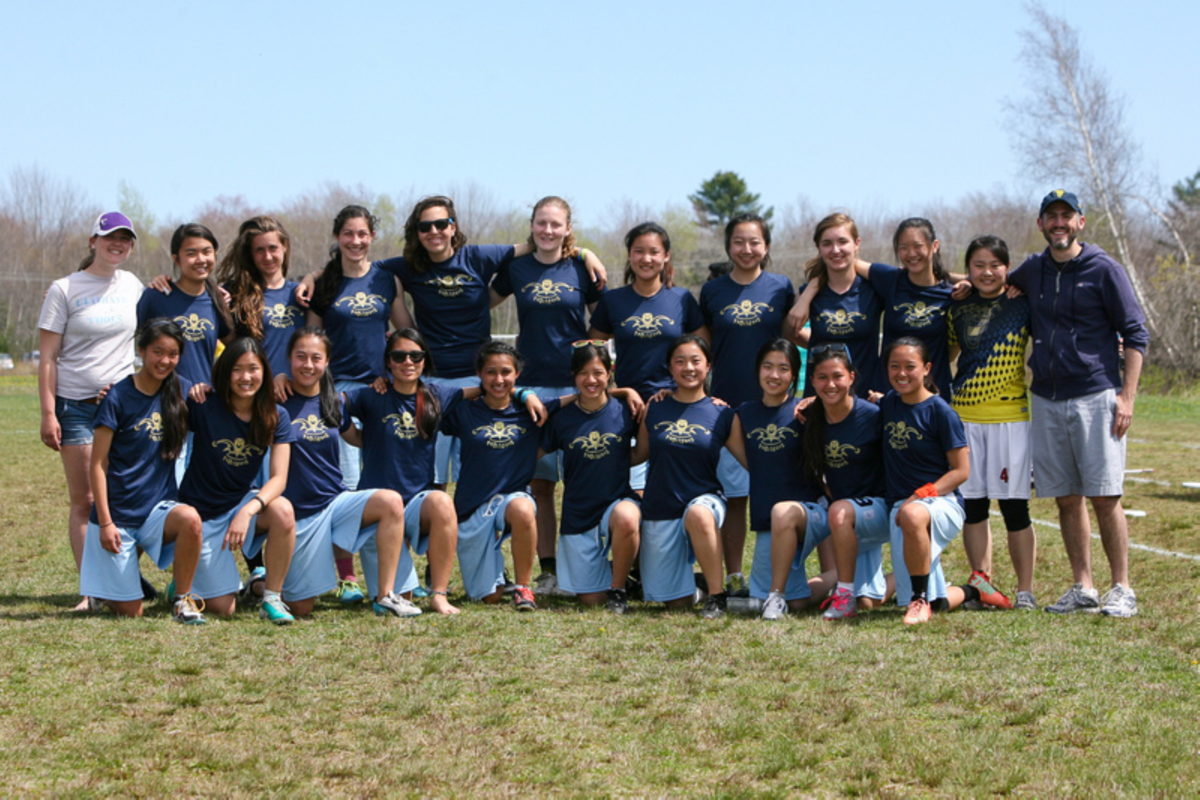Marissa Lerner was captain of her women’s ultimate team, Iron Horse, at Washington University in St. Louis and captained the Boston Ultimate Disc Alliance (BUDA) YCC U-19 girls’ team in 2015, finishing second in the nation. She, along with her former high school teammates Caitlin Go, Tamar Austin, Leanne Go, Justinne Guarin and Eva McDermott, helped form and launch the first-ever girls’ ultimate team at Lexington High School (LHS) in Lexington, Mass. – the Fooligals. Tamar and Caitlin trailblazed the way and recruited a critical mass of girls to pick up the sport at LHS in 2013. Leanne and Justinne captained the team in 2014 and organized and formalized practices, jerseys and logistics. Tamar went on to captain the Rensselaer Polytechnic Institute women’s team, Strut, for four years. In 2018, she led them to their first ever D-III College Championship appearance, and she was also the 2018 Donovan Award recipient. Caitlin Go thrived with Stanford Superfly, captaining the team in 2017 and 2018 and earning their Callahan nomination in 2018. She also has coached BUDA YCC girls and mixed teams, has a D-I College Championship title under her belt and won gold with the U-20 Women’s National Team at the 2014 World Junior Ultimate Championships. Justinne spent four years on the UMass women’s team, LadyZoo, and then transferred to Tufts where she played her fifth year. Leanne Go crushed it at UC San Diego, leading her college team to win nationals in 2019, claiming a spot on the women’s First Team for the 2018 D1 All-Region Team and making San Diego Wildfire’s roster as a practice player. Together, Marissa, Justinne and Tamar discussed where they got their inspiration to start a team, the hurdles they had to overcome, the leadership skills they developed and the advice they would give on starting a new team and building a sustainable program.
1. What inspired you to start the team?
Marissa: In 2012, the year before I began playing ultimate in high school, four or five of the girls who were playing on the Lexington boys’ team at the time went to the Saint Johnsbury Invitational in Vermont. They played as pick-up players with other girls who also didn’t have a team, and they ended up placing second in the girls’ division. Tamar Austin and Caitlin Go, two of the Lexington girls, took the initiative to recruit new players and get a full Lexington team to attend the invitational the next year, which they ended up winning by going undefeated.

Photo: provided by the Fooligals’ Twitter account
Tamar: From there [the 2013 Saint Johnsbury Invitational], I think that’s when it really started to come to life that we wanted to have a full girls’ team.

Photo: Matt Liebhold — UltiPhotos
Justinne: My senior year, I wanted to try out for varsity. I wanted to learn more and play at a higher level, even if that meant not getting as much playing time. However, I had a lot of guys try to stop me, saying I wasn’t good enough, I was too small and I would not be able to keep up with the boys, even though during the tryout process I definitely was able to hold my own.
It was the most frustrating thing to feel that the varsity captains did not give me a chance and did not see me for how hard I worked. That yearning for the positive, family culture of an all-female team was a huge inspiration for creating the Fooligals.
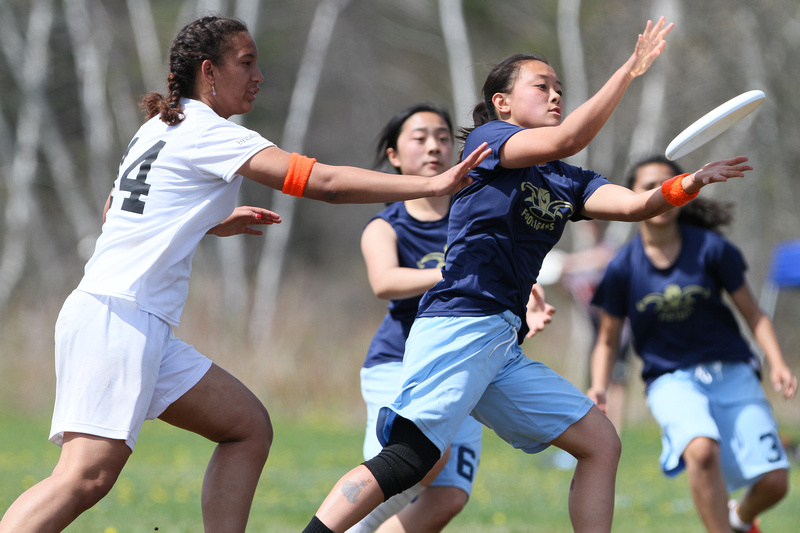
Photo: Burt Granofsky — UltiPhotos
2. What was the process like in building the team?
Marissa: Retention really challenged the Fooligals early on. We tried to convince friends and friends of friends to quit their soccer, field hockey, swimming and lacrosse teams and come try a totally new sport. We invited them to pick-up games over the summer, with the hopes a casual throwing session would turn into a newfound interest for a potential teammate. This didn’t happen the first year, so we had a hybrid season where we would combine our practices with the boys’ JV team, but then attend some tournaments as solely a girls’ team.
It was difficult to secure a knowledgeable and available coach strictly for the girls’ team, because our program was understaffed due to high numbers on the boys’ JV team. The boys’ captains ended up coaching many of our practices in the beginning.
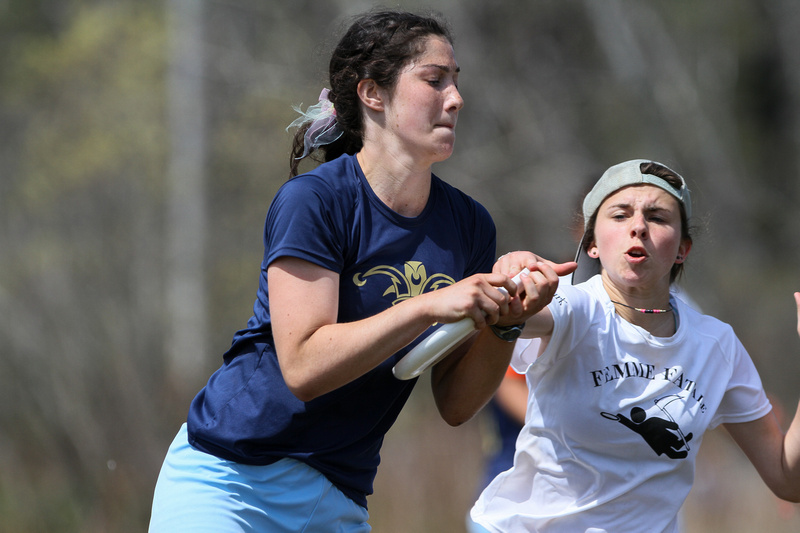
Photo: Burt Granofsky — UltiPhotos
There were also many logistical hurdles that we faced. Simply applying to tournaments required knowing when they were, sending in bids and getting invites once you had an established program. This was a learning curve for us for sure, so we really relied on passed down knowledge from Tamar, Caitlin and Justinne, as well as help from the men’s team. Transportation and lodging were also huge feats that took a lot of parental, and sometimes school, support to make things financially feasible. Additionally, we needed uniforms, so we partnered with Spin to help subsidize our jerseys.
Lastly, any new team needs to set goals around culture and expectations, and work to create a shared identity. When we started, we had no standards in place regarding attendance expectations, tournaments, timelines, workout accountability or culture. We learned that it took a lot of patience to create a culture of commitment and accountability, and the best way we found to work was to have knowledgeable veterans lead by example and set the tone early on.
3. What have you learned as a leader on the ultimate field?
Marissa: I’ve learned that words and body language matter. How you play, speak and act set the tone for the team. Regarding tone, constructive criticism is key. It’s important to applaud the good while focusing on areas for improvement. It can be hard to maintain a positive and constructive tone all of the time, but leading on the ultimate field has taught me when it’s appropriate to be more stern and when it’s necessary to let go of personal frustrations for the sake of the team.
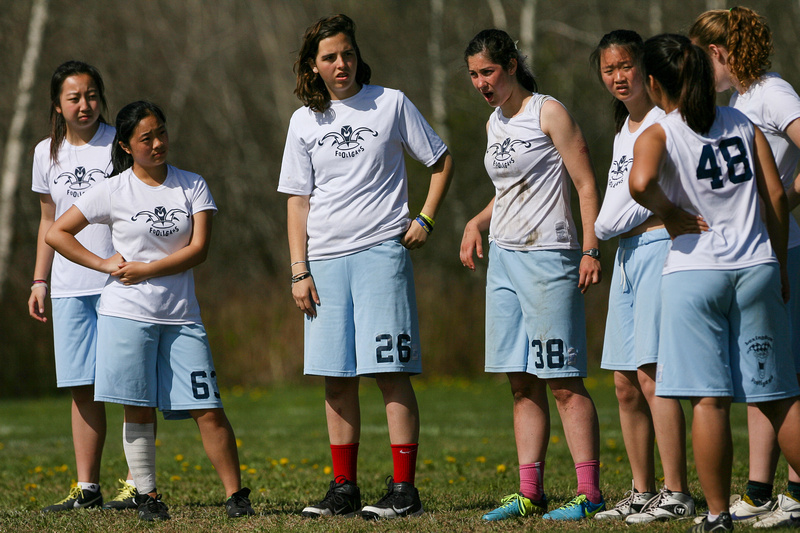
Photo: Burt Granofsky — UltiPhotos
Also, when you’re a leader, you have the biggest responsibility to be open-minded, inclusive and transparent. Holding the team accountable for kindness and support, and making sure to over-communicate and allow pathways for feedback, are key to team and personal growth.
Tamar: One of the toughest lessons I learned was how to manage expectations and understand that every team is different. My college team had lower expectations [than the Fooligans/Fooligals], and that led to a lot of frustration and imbalance on how much I was committing myself to Frisbee. A competitive team will quickly devolve if the majority of the players are not interested in getting better and building a better skill set.
Also, planning was key to being a good leader. Using time and resources efficiently makes for more productive practices and faster team improvement. A good leader should set a clear, accomplishable goal for practice or a tournament and have, at most, three small points of emphasis for the players to focus on (i.e., sharper cuts, better defensive positioning or others).
4. How has being a leader in ultimate contributed to you as a person off the field?
Marissa: Personally, being a leader has revolutionized the way I approach mental toughness and growth mindset in my everyday life. When you have to overcome your own physical and mental boundaries as a player and then you learn how to encourage and lead others to do the same, it’s incredibly empowering. You really know that you can get through anything, especially if you have supportive teammates and friends to help you. It took years and many team discussions, but leading on the ultimate field has made me a better communicator, a more positive leader and someone who feels more confident taking initiative in all aspects of my daily life.
Tamar: In college, I took on the role of captain as a first year, which was challenging to do with a new school environment and completely novel team culture. My time on the Fooligans and Fooligals really strengthened my skill set and made it possible for me to take on these new challenges. I could conduct a solid practice, I knew plays and game strategies, and I was able to teach effectively.
Those skills have translated to my academic and professional life in a really profound way, as I took charge more and accomplished tougher goals. I also learned to speak up and improve aspects of my social anxiety. I became a better listener and more empathetic, and I also gained enough courage to stand up to large institutions (i.e., the men’s team) and demand recognition and support for our growth.
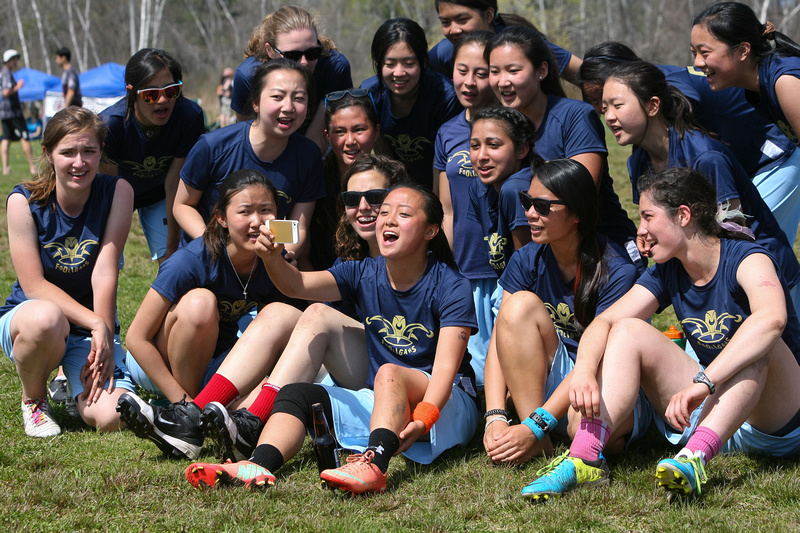
Photo: Burt Granofsky — UltiPhotos
5. Do you have any difficulties as a female leader?
Marissa: Our biggest struggle recently was getting decent field space for both of our college teams. Over the past few years, our sister developmental team, Locomotive, would practice on the side of the intramural softball fields, sometimes while games were going on. This fall, we’ve worked closely with our men’s teams and athletic director to find equitable field space and time.
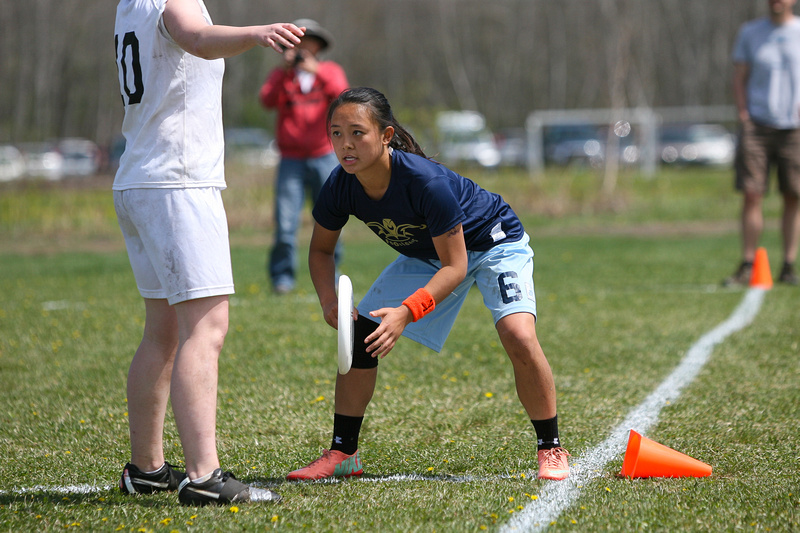
Photo: Burt Granofsky — UltiPhotos
Tamar: When I first started at RPI, I had to play with the men’s team for the first fall season because we didn’t have any women attend practice. I ran into so many difficulties getting the men on the team to respect my knowledge and skill set. They often ignored my advice, only for me to later see them listening to a guy tell them the same thing. However, when I started building the women’s team, I gradually commanded some authority and gained their respect.
Since then, the biggest struggle was getting field space for ourselves. When we had to share with the boys, they scrutinized and made fun of our practice, and then they shuffled us over to the corner of the field while they scrimmaged or worked on drills. As a larger team now, we command more of the field space and have our own time slot apart from the boys.
6. What advice would you give other women looking to start a team in their area or become a leader on their team?
Marissa: For those starting a team:
- Make a list of priorities. What do you want this team to accomplish? What is the best method to go about that?
- Create an identity for the team. This could be anything from a team name or mascot or motto. Use posters, websites and flyers to get your team’s presence out there.
- Reach out to friends and the local ultimate community. Are there local Facebook groups for pickup, women’s ultimate or club ultimate in your area? See if there are experienced players who are willing to lend some expertise for coaching or just for general advice. Though the ultimate community is pretty small, it can be a tight-knit group, so take advantage of that.
For those wanting to become a leader of your team:
- Watch current leaders. What do you like about their leadership style? How might you lead differently? How does the team respond to current leadership? Take note of how current leaders conduct the team and handle difficult situations.
- Try it out. See if there are ways to take small leadership roles and test the waters. Can you lead warm-ups or a drill? If a captain asks for help organizing workouts or throwing sessions, take the lead and see how it goes.
- Elevate your game as much as possible. Ask the captain or coaches what you need to work on and then make a concerted effort to do so. If the team sees you taking your game and the team seriously, your chances of being elected into a leadership role will improve.
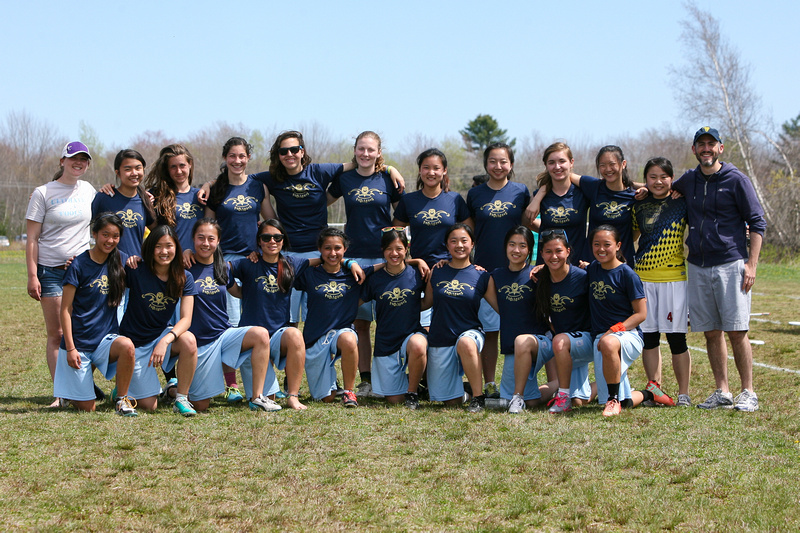
Photo: Burt Granofsky — UltiPhotos

